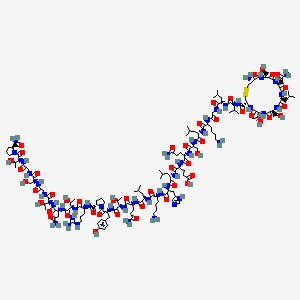
Synopsis
Synopsis
0
KDMF
0
VMF
0
US Patents
0
US Exclusivities
0
Health Canada Patents
0
Stock Recap #PipelineProspector
0
Weekly News Recap #Phispers
Annual Reports
NA


1. Calcihexal
2. Calcimar
3. Calcitonin Salmon
4. Forcaltonin
5. Fortical
6. Miacalcic
7. Miacalcin
8. Recombinant Salmon Calcitonin
9. Salcatonin
10. Salmon Calcitonin (1-32)
11. Synthetic Salmon Calcitonin
1. Calcitonin-salmon
2. Thyrocalcitonin (salmon)
3. Cibacalcin
4. Calcitonina
5. Calcitar
6. Bionocalcin
7. Calcimonta
8. Calcitoran
9. Cibacalcine
10. Eptacalcin
11. Miracalcic
12. Osseocalcina
13. Ostostabil
14. Porostenina
15. Prontocalcin
16. Rulicalcin
17. Salmocalcin
18. Salmotonin
19. Tonocalcin
20. Astronin
21. Biocalcin
22. Calciben
23. Calcinil
24. Calcioton
25. Calogen
26. Calsynar
27. Caltine
28. Catonin
29. Citonina
30. Ipocalcin
31. Kalsimin
32. Oseototal
33. Osteobion
34. Osteovis
35. Ostosalm
36. Quosten
37. Riostin
38. Salcatyn
39. Salmofar
40. Stalcin
41. Staporos
42. Steocin
43. Cadens
44. Casalm
45. Ostora
46. Salcat
47. Ucecal
48. Calco
49. Karil
50. Sical
51. Isi-calcin
52. Calcitonin,salmon
53. Calsynar Lyo L
54. Calcitonin(salmon)
55. Calcitonin, Salmar
56. Salmon Calcitonin I
57. Calcitonin Vom Lachs
58. Calcitonine De Saumon
59. Tz-ct
60. Unii-7sfc6u2vi5
61. Salmon Calcitonin-(i-32)
62. 7sfc6u2vi5
63. Salmon Calcitonin-(1-32)
64. Chebi:3306
65. Calcitonin, Salmon, For Bioassay
66. Dtxsid601026667
67. Calcitonin [usan:inn:ban:jan]
68. Einecs 256-342-8
69. Ncgc00167232-01
70. Calcitonin Salmon, >=97% (hplc), Powder
71. Calcitonin Salmon, European Pharmacopoeia (ep) Reference Standard
72. Calcitonin Salmon, United States Pharmacopeia (usp) Reference Standard
73. Cyclo-[cys-ser-asn-leu-ser-thr-cys]-val-leu-gly-lys-leu-ser-gln-glu-leu-his-lys-leu-gln-thr-tyr-pro-arg-thr-asn-thr-gly-ser-gly-thr-pro-nh2
| Molecular Weight | 3431.9 g/mol |
|---|---|
| Molecular Formula | C145H240N44O48S2 |
| XLogP3 | -16.6 |
| Hydrogen Bond Donor Count | 52 |
| Hydrogen Bond Acceptor Count | 55 |
| Rotatable Bond Count | 99 |
| Exact Mass | 3430.7166627 g/mol |
| Monoisotopic Mass | 3429.7133079 g/mol |
| Topological Polar Surface Area | 1560 Ų |
| Heavy Atom Count | 239 |
| Formal Charge | 0 |
| Complexity | 7970 |
| Isotope Atom Count | 0 |
| Defined Atom Stereocenter Count | 34 |
| Undefined Atom Stereocenter Count | 0 |
| Defined Bond Stereocenter Count | 0 |
| Undefined Bond Stereocenter Count | 0 |
| Covalently Bonded Unit Count | 1 |
Used in the treatment of symptomatic Paget's disease for patients unresponsive to alternate treatments or intolerant to such treatments. In addition, it is used in emergency situations when serum calcium levels must be decreased quickly until the underlying condition is identified. It can also be added to existing therapeutic regimens for hypercalcemia such as intravenous fluids and furosemide, oral phosphate or corticosteroids, or other agents. Calcitonin can be used in patients with azotemia and cases where intravenous fluids would be contraindicated due to limited cardiac reserves. Also for the treatment of post-menopausal osteoporosis in women more than 5 years post-menopause.
Calcitonin inhibits bone resorption by osteoclasts (bone remodeling cells) and promotes bone formation by osteoblasts. This leads to a net increase in bone mass and a reduction in plasma calcium levels. It also promotes the renal excretion of ions such as calcium, phosphate, sodium, magnesium, and potassium by decreasing tubular reabsorption. In consequence, there is an increase in the jejunal secretion of water, sodium, potassium, and chloride.
Bone Density Conservation Agents
Agents that inhibit BONE RESORPTION and/or favor BONE MINERALIZATION and BONE REGENERATION. They are used to heal BONE FRACTURES and to treat METABOLIC BONE DISEASES such as OSTEOPOROSIS. (See all compounds classified as Bone Density Conservation Agents.)
Calcium-Regulating Hormones and Agents
Hormones and molecules with calcium-regulating hormone-like actions that modulate OSTEOLYSIS and other extra-skeletal activities to maintain calcium homeostasis. (See all compounds classified as Calcium-Regulating Hormones and Agents.)
Absorption
Salmon calcitonin is rapidly absorbed with bioavailability of 71% following subcutaneous injection and 66% following intramuscular injection in humans. Via the nasal route, the bioavailability varies between 3 to 5% relative to IM.
Route of Elimination
Urine. Studies with injectable calcitonin show increases in the excretion of filtered phosphate, calcium, and sodium by decreasing their tubular reabsorption in the kidney.
Volume of Distribution
0.15 to 0.3 L/kg
Salmon calcitonin primarily undergoes degradation in the kidneys to form pharmacologically inactive metabolites. It is also metabolized in the blood and the peripheral tissue.
Half-life elimination (terminal): I.M. 58 minutes; SubQ 59 to 64 minutes; Nasal: ~18 to 23 minutes
Calcitonin binds to the calcitonin receptor (found primarily in osteoclasts) which then enhances the production of vitamin D producing enzymes (25-hydroxyvitamine D-24-hydroxylase), leading to greater calcium retention and enhanced bone density. Binding of calcitonin to its receptor also activates adenylyl cyclase and the phosphatidyl-inositol-calcium pathway.

API Imports and Exports
| Importing Country | Total Quantity (KGS) |
Average Price (USD/KGS) |
Number of Transactions |
|---|
Upgrade, download data, analyse, strategize, subscribe with us
DRUG PRODUCT COMPOSITIONS

Global Sales Information

Market Place

REF. STANDARDS & IMPURITIES

ABOUT THIS PAGE


LOOKING FOR A SUPPLIER?